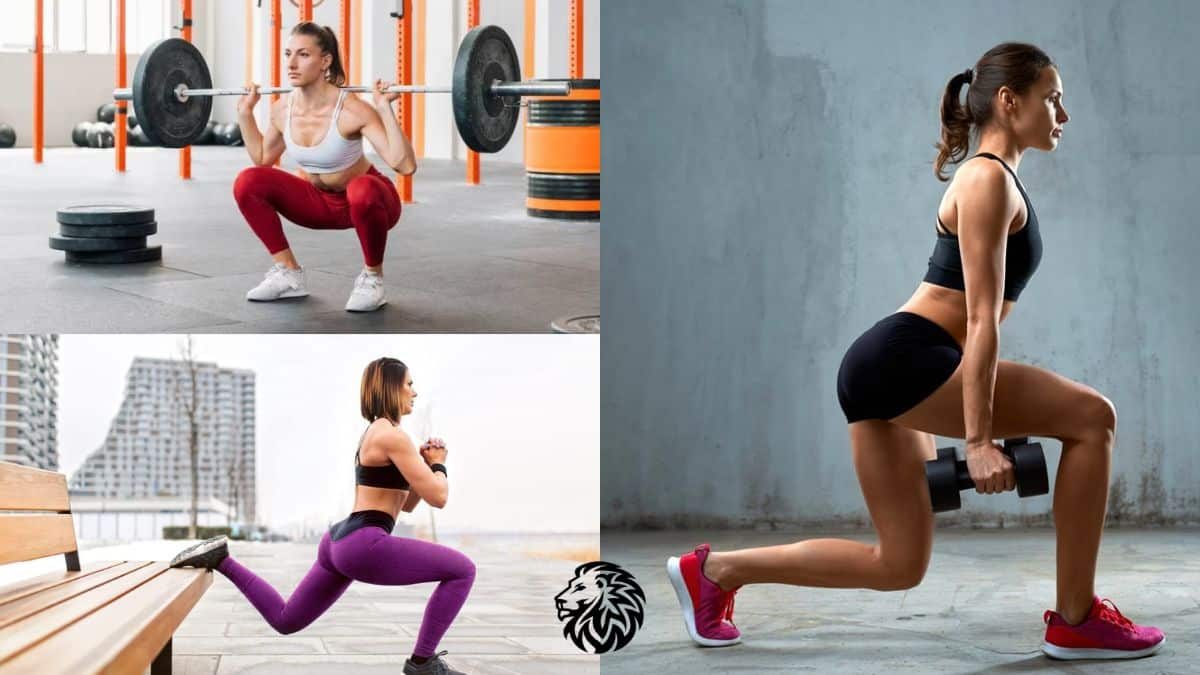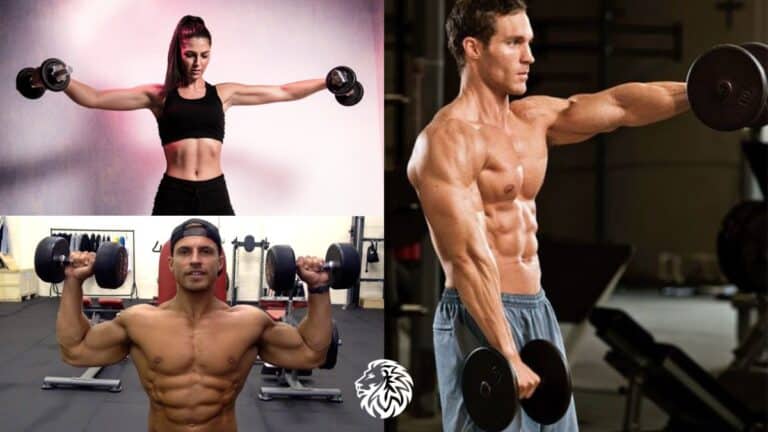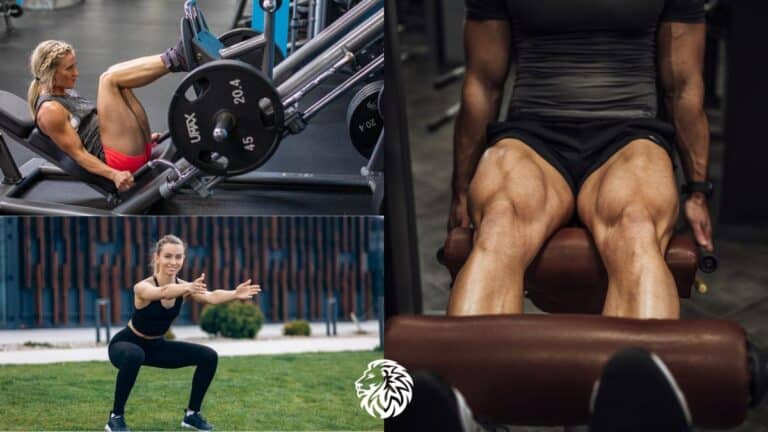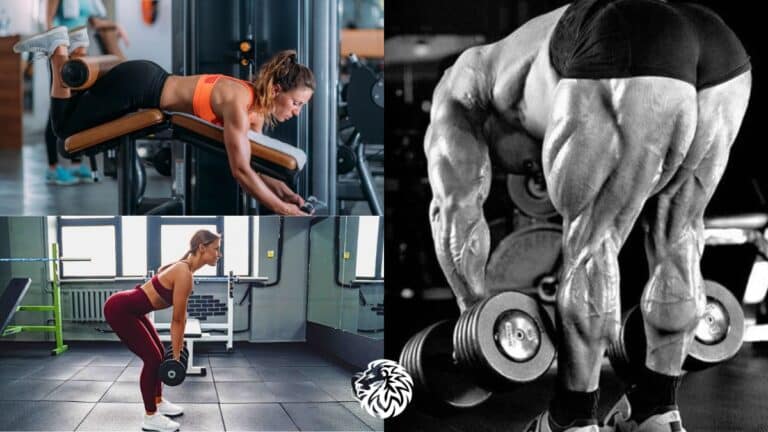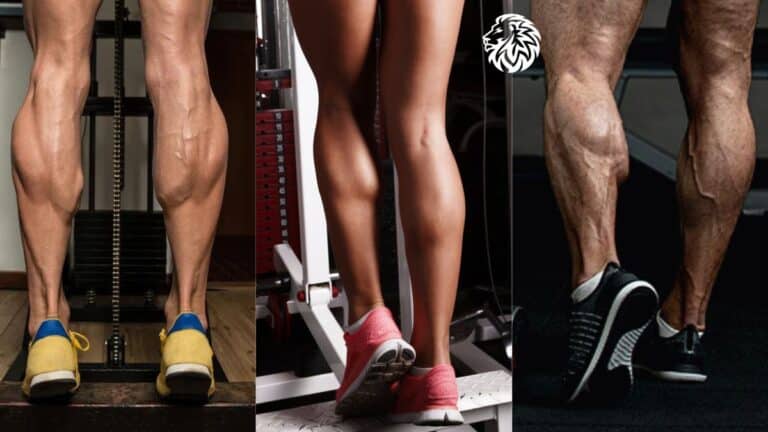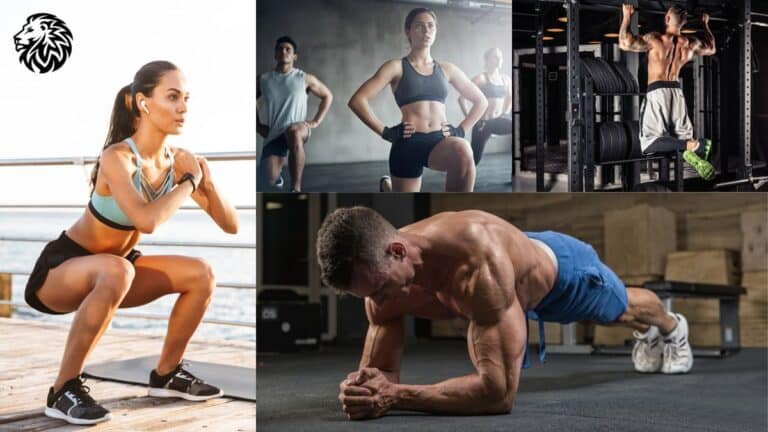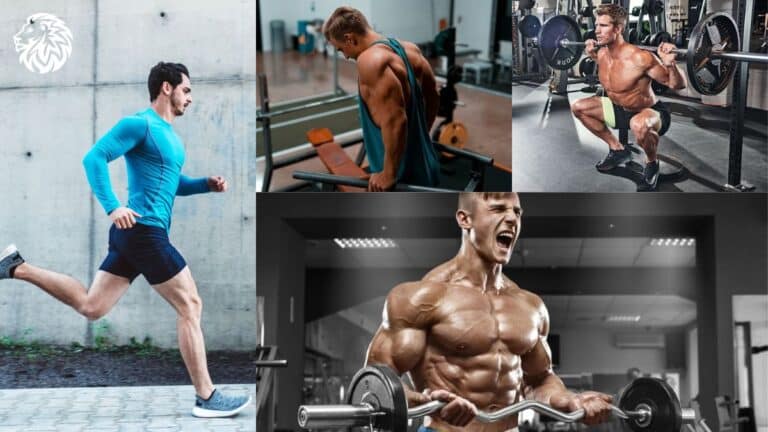Strong legs are key for everyone, especially women. The muscles at the front of your thighs, called quadriceps, play a big part in this. They help you stand, walk, and jump. They even keep your knees safe from injury. When your quads are strong, your whole body feels better. You stand taller, move easier, and do better in sports and fun activities.
We picked five great exercises to make your quads stronger. These are back squats, Bulgarian split squats, dumbbell squats, lunges, and jump squats. Each one targets your quads in a special way. This article will show you how to do them right and how they help you. Get ready to feel stronger and more powerful in everything you do!
The 5 Best Quadricep Exercises for Women
1. Back Squats
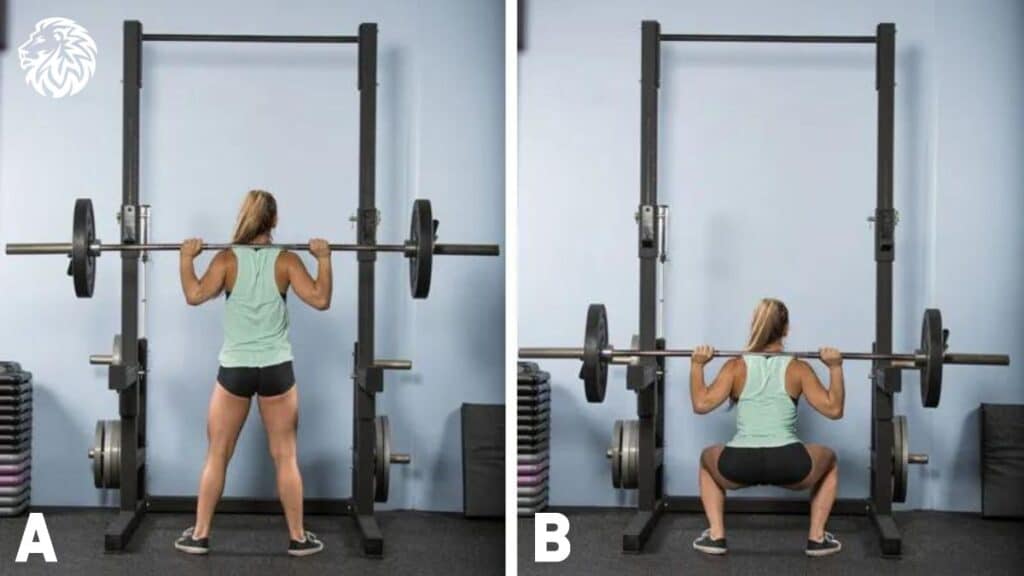
Overview
Back squats are a top exercise for making your lower body strong. When you do them, you work out not just your quads, but also your hips, glutes, and lower back. This exercise helps you get stronger for all kinds of sports and daily tasks. Plus, it can make your legs look great!
Technique
Here’s how to do back squats the right way:
- Stand with your feet a bit wider than your shoulders. Point your toes slightly out.
- Place a barbell on your shoulders, not your neck. Keep your back straight.
- Bend your knees to lower down, like you’re sitting in a chair. Go down until your thighs are parallel to the floor.
- Push through your heels to stand back up. Keep your chest up and back straight the whole time.
Variations
To mix it up, try these changes:
- Bar Placement: Move the bar lower on your shoulders for a “low bar” squat. This works your hips and glutes more.
- Squat Depth: Go deeper than parallel if you can do it safely. This works your muscles harder.
- Foot Position: Change how far apart your feet are or point your toes differently to target different parts of your legs.
Tips for Beginners
If you’re new to back squats:
- Start with just the bar to learn the right form.
- Add weight slowly. Don’t rush to lift heavy.
- Use a mirror to check your form. Keep your back straight and chest up.
- Practice without weights or with a broomstick to get the movement down.
Back squats are great for building strength. By doing them right, you’ll see big gains in your fitness and how you move every day.
2. Bulgarian Split Squat
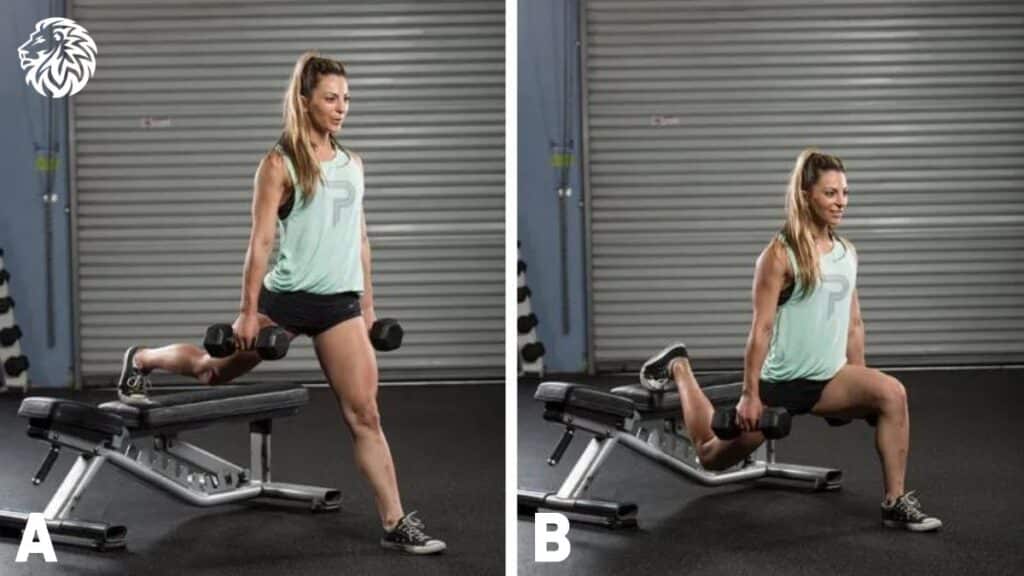
Overview
The Bulgarian split squat is a powerful exercise that targets one leg at a time. This move is great for building strength in your quads, but it also hits your glutes and hamstrings. It’s perfect for improving balance and making sure both legs are equally strong. Unlike regular squats, this one challenges your ability to stay balanced, which is great for sports and daily life.
Technique
Follow these steps to do Bulgarian split squats correctly:
- Stand in front of a bench or step. Place one foot behind you on the bench.
- Stand tall with your chest up. Look straight ahead.
- Bend your front knee to lower your body. Your back knee will go towards the floor. Stop when your front thigh is close to parallel with the floor.
- Push through your front foot to stand back up to the starting position.
- Keep your movements smooth and controlled. Do all your reps on one leg, then switch.
Variations
To make the Bulgarian split squat harder or easier, try these ideas:
- Add Weights: Hold dumbbells by your sides or a barbell across your shoulders to increase resistance.
- Adjust Elevation: Use a higher or lower bench to change the difficulty. The higher the bench, the harder it is.
- Foot Position: Moving your front foot closer or further from the bench can change how much your muscles work.
Tips for Beginners
If you’re new to Bulgarian split squats:
- Start without weights to get used to the movement.
- Use a wall or chair for balance if you find it hard to stay steady.
- Begin with a lower elevation to make balancing easier.
- Focus on keeping your front knee in line with your foot. Don’t let it go past your toes.
This exercise can really strengthen your legs and improve your balance when done regularly. Starting slow and focusing on your form will help you get the most out of it.
3. Dumbbell Squats
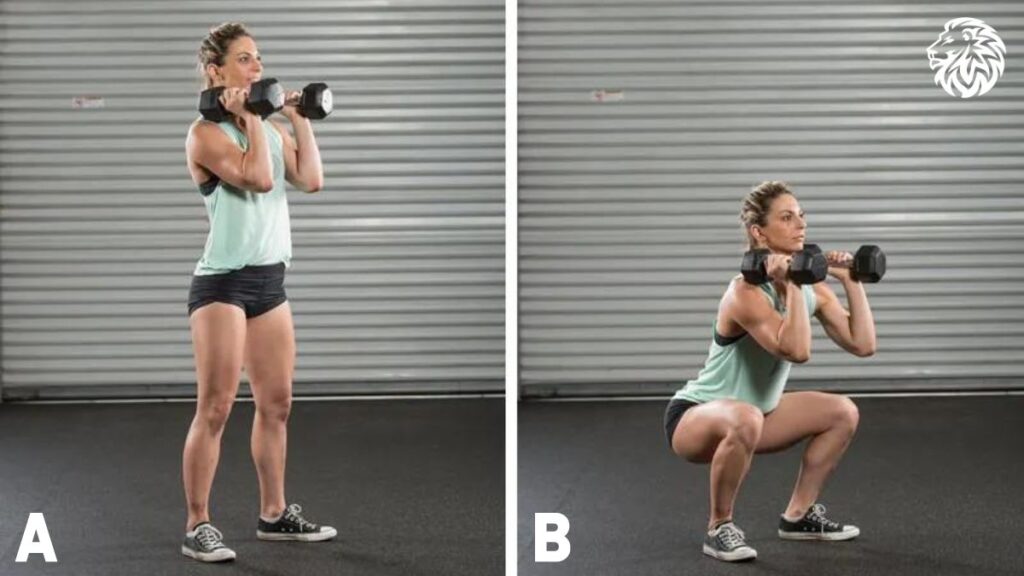
Overview
Dumbbell squats are a fantastic way to make your legs stronger, especially your quads. They’re great because you can do them almost anywhere, and all you need are dumbbells. This exercise not only strengthens your legs but also improves your balance and helps with daily activities like lifting and walking up stairs.
Technique
Here’s how to do dumbbell squats the right way:
- Stand with your feet shoulder-width apart, holding a dumbbell in each hand at your sides.
- Keep your chest up and your gaze forward. Pull your shoulders back.
- Bend at the knees and hips to lower down as if sitting back into a chair. Go down until your thighs are parallel to the ground.
- Make sure your knees don’t go past your toes.
- Push through your heels to stand back up to the starting position.
- Keep the dumbbells close to your body throughout the movement.
Variations
Try these changes to work your quads in different ways:
- Goblet Squat: Hold a single dumbbell close to your chest. This helps keep your back straight and focuses more on your quads.
- Sumo Squat: Widen your stance and point your toes out. This targets your inner thighs and glutes too.
- Staggered Stance Squat: Place one foot slightly in front of the other. This variation challenges your balance and hits the quads of your front leg more.
Tips for Beginners
If you’re new to dumbbell squats:
- Start with lighter weights to focus on your form.
- Don’t rush. Move up in weight only when you can do the exercise with good form.
- Keep your movements smooth and controlled.
- If you’re unsure about your form, practice the squat without weights first.
Dumbbell squats are a simple yet effective way to build strength. By paying attention to your form and starting with the right weight, you’ll make great progress.
4. Lunges
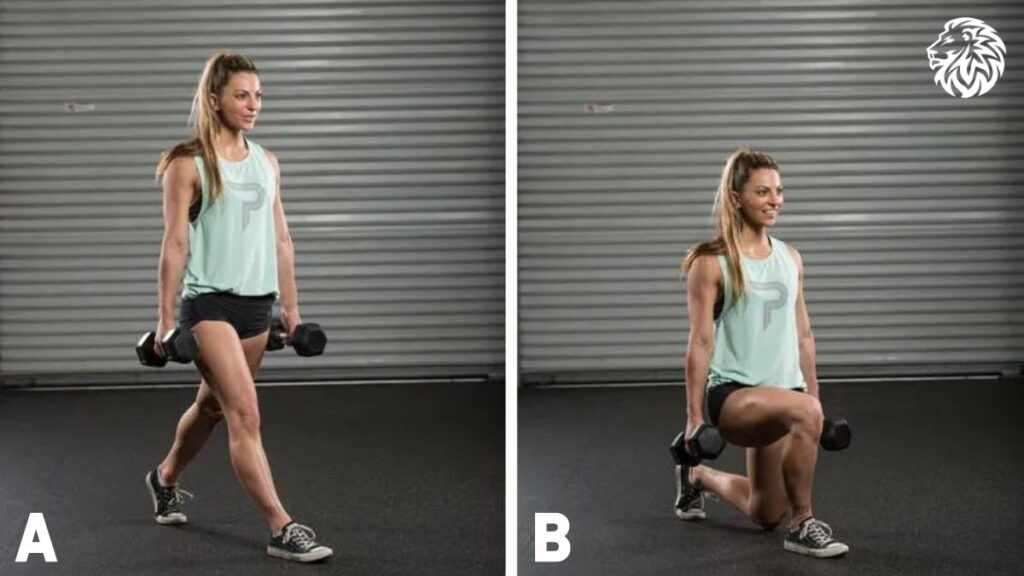
Overview
Lunges are a key exercise for targeting your quadriceps. They also work out your glutes, hamstrings, and calves. Lunges are great because they mimic real-life movements, like walking or running. This makes them a fantastic choice for improving your fitness and making daily activities easier.
Technique
Follow these steps for a basic forward lunge:
- Stand tall with your feet hip-width apart.
- Take a big step forward with one leg.
- Lower your body until both knees are bent at about a 90-degree angle. The back knee should come close to touching the ground.
- Make sure your front knee doesn’t go past your toes.
- Push off your front foot to return to the starting position.
- Repeat on the other side.
Variations
Mix up your lunges with these variations:
- Forward Lunge: Steps forward, focusing on the quads.
- Reverse Lunge: Steps backward, easier on the knees and great for balance.
- Lateral Lunge: Steps to the side, targeting the inner and outer thighs.
- Walking Lunge: Alternating forward lunges, moving you forward and adding a dynamic element.
Tips for Beginners
If you’re new to lunges:
- Start without weights to get used to the movement.
- Focus on keeping your balance. Use a chair or wall for support if needed.
- Keep your torso straight and your gaze forward to help maintain balance.
- Practice the movements slowly and with control. Speed can come later.
Lunges are a versatile exercise that can strengthen your legs and improve your balance. Start with the basics, and as you get stronger, try out the different variations to keep your workouts interesting.
5. Jump Squats
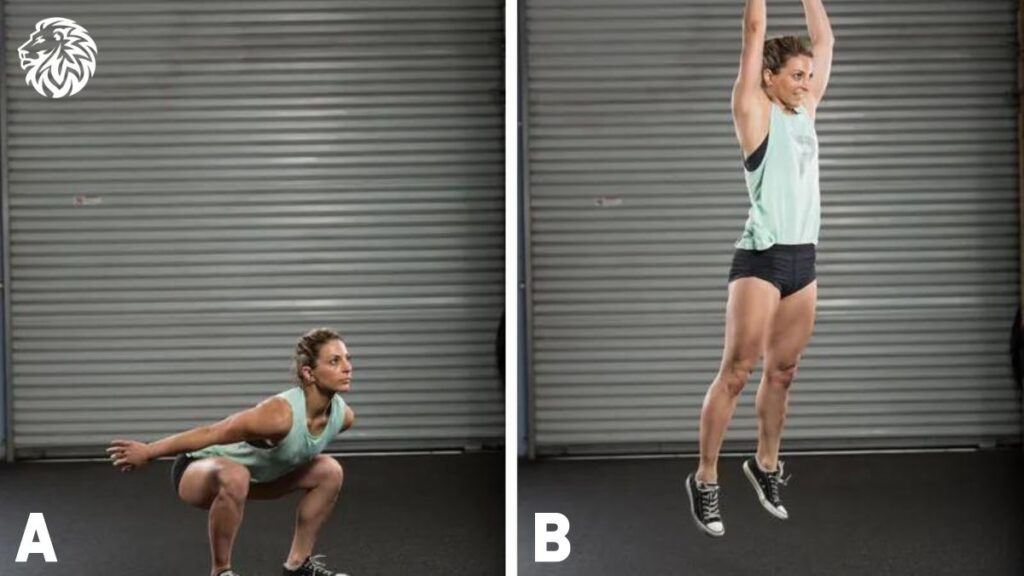
Overview
Jump squats are a dynamic move that boosts your quad strength and power. This exercise is a type of plyometric training, which means it makes your muscles exert maximum force in short intervals. This is perfect for increasing your explosive strength, which can help in sports and activities that require quick bursts of movement.
Technique
Here’s how to do jump squats safely:
- Start in a regular squat position with feet shoulder-width apart.
- Lower yourself into a squat. Keep your back straight and knees behind your toes.
- From the bottom of the squat, explode upwards, jumping as high as you can.
- Land softly on your feet, bending your knees to go right into the next squat.
- Keep your landings quiet to ensure you’re using good form and protecting your joints.
Variations
To adjust the intensity of jump squats:
- Add Weights: Hold light dumbbells to increase resistance, but make sure you can still jump safely.
- Change Depth: Modify how deep you squat before jumping to either increase or decrease the difficulty.
- Single-Leg Jump Squat: For an advanced challenge, try jumping off one leg at a time.
Tips for Beginners
If you’re new to jump squats or plyometric exercises:
- Start with basic squats to build strength before adding the jump.
- Focus on landing softly to protect your knees.
- Begin with lower jumps and gradually increase the height as you get more comfortable.
- Always warm up your muscles before starting to prevent injuries.
Implementing These Exercises into Your Routine
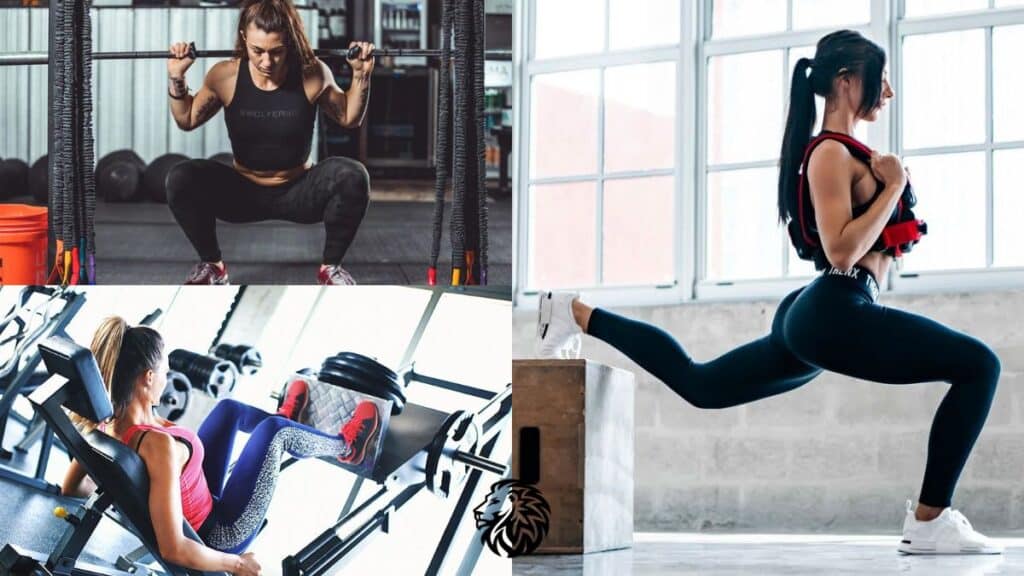
Incorporating back squats, Bulgarian split squats, dumbbell squats, lunges, and jump squats into your routine can significantly enhance your quadricep strength and overall lower body power. Here’s how to effectively integrate these exercises into a balanced workout plan, along with tips on frequency, sets, and reps for optimal development.
Creating a Balanced Workout Plan
- Mix It Up: Include a variety of exercises in your routine to target the quads from different angles and to ensure balanced muscle development. You can alternate between these five exercises across your workout days.
- Pair with Other Muscle Groups: Don’t just focus on your quads. Pair quad exercises with workouts targeting your hamstrings, calves, and glutes. This approach ensures balanced strength and muscle growth, preventing imbalances that could lead to injuries.
- Add Upper Body Work: On days you’re working your lower body, include some upper body exercises to maintain a well-rounded fitness routine. This could mean doing upper body work on the same day or alternating upper and lower body days.
Frequency, Sets, and Reps
- Frequency: Aim to train your lower body 2-3 times a week. This frequency allows adequate recovery between sessions, which is crucial for muscle growth and strength gains.
- Sets and Reps for Strength: For strength building, focus on 3-5 sets of 6-8 reps for each exercise. Use a weight that makes the last few reps challenging but still allows you to maintain good form.
- Sets and Reps for Endurance: If you’re focusing on endurance, aim for 2-3 sets of 12-15 reps with a lighter weight. This rep range helps improve muscle endurance and stamina.
- Progressive Overload: Gradually increase the weight or resistance as the current sets become less challenging. This principle of progressive overload is key to continuing muscle growth and strength improvements.
Tips for Optimal Quadricep Development
- Warm-Up Properly: Start with a general cardiovascular warm-up followed by dynamic stretches to prepare your muscles for the workout.
- Focus on Form: Prioritize maintaining correct form over lifting heavier weights or doing more reps. This not only maximizes muscle engagement but also reduces the risk of injury.
- Rest and Recover: Allow at least 48 hours of rest before targeting the same muscle group again. Recovery is when your muscles repair and grow stronger.
- Stay Consistent: Consistency is crucial for muscle development. Stick to your workout schedule and make adjustments as needed based on your progress and any physical feedback from your body.
By following these guidelines, you can effectively incorporate these key quadricep exercises into your routine, leading to stronger legs and improved overall fitness. Remember, everyone’s body responds differently to exercise, so it’s important to listen to your body and adjust your workout plan as needed.
Conclusion
We’ve covered five powerful quadricep exercises: back squats, Bulgarian split squats, dumbbell squats, lunges, and jump squats. Each of these exercises offers unique benefits for strengthening and sculpting your quads, which are crucial for everyday movements, sports performance, and maintaining a strong and balanced lower body.
Back squats help build a solid foundation, targeting your lower back, hips, and glutes along with your quads. Bulgarian split squats focus on each leg individually, improving balance and unilateral strength. Dumbbell squats offer a versatile way to enhance lower body strength with the added benefit of easy accessibility. Lunges are excellent for targeting multiple muscle groups and improving functional movement patterns. Lastly, jump squats add an explosive element to your training, boosting power and agility.
Incorporating these exercises into your fitness routine can lead to significant improvements in leg strength, overall health, and well-being. Start with weights and variations that feel comfortable for your current level of fitness, and gradually increase the intensity to challenge your muscles and foster growth. Remember, consistency is key. Regularly performing these exercises will not only strengthen your quads but also contribute to a more balanced and powerful physique.
We encourage you to begin incorporating these quadricep exercises into your workout regimen. Whether you’re looking to improve your athletic performance, enhance your daily functional movements, or simply build a stronger, more toned lower body, these exercises can help you achieve your goals. Start today, and enjoy the journey toward improved strength and health.
Frequently Asked Questions
- Do I need special equipment to perform these quadricep exercises?
- No, you don’t need special equipment for these exercises. While back squats require a barbell, alternatives like dumbbell squats and bodyweight exercises like lunges and jump squats can be done with minimal or no equipment at all.
- How often should I do these exercises for the best results?
- For the best results, aim to incorporate these quadricep exercises into your workout routine 2-3 times per week. This frequency allows your muscles time to recover and grow stronger.
- Can beginners do these exercises, or are they too challenging?
- Absolutely, beginners can do these exercises. Start with lighter weights or bodyweight versions and focus on mastering the correct form before adding more weight or intensity.
- Are these exercises suitable for those with knee problems?
- If you have knee problems, it’s important to proceed with caution. Exercises like lunges and squats can be modified to reduce strain on the knees. However, consult with a healthcare provider or physical therapist before starting any new exercise regimen.
- How long will it take to see results from doing these quadricep exercises?
- Results vary based on your starting point, frequency, and intensity of workouts, as well as your diet and overall lifestyle. Generally, you might start noticing improvements in strength and muscle tone within 4 to 6 weeks of consistent training.
References and Further Reading
- Women’s Health. (n.d.). Quads exercises. Retrieved from https://www.womenshealthmag.com/fitness/a19981853/quads-exercises/
- SELF. (n.d.). The best quad exercises. Retrieved from https://www.self.com/gallery/best-quad-exercises
- Bodybuilding.com. (n.d.). Quad workouts for women: 9 workouts for strong sculpted legs. Retrieved from https://www.bodybuilding.com/content/quad-workouts-for-women-9-workouts-for-strong-sculpted-legs.html
- PopSugar. (n.d.). The best exercises for women’s quads. Retrieved from https://www.popsugar.com/fitness/best-exercises-women-quads-45983722
